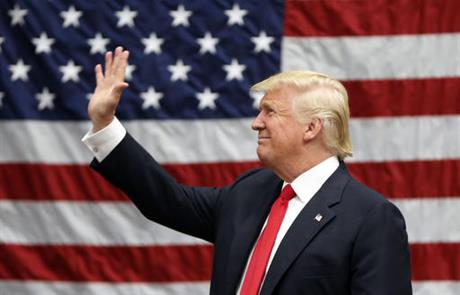
By Michelle Conlin and Grant Smith
NEW YORK (Reuters) – U.S. Republican presidential candidate Donald Trump has been a hit with small donors, raking in two-thirds of his individual campaign contributions in sums of $200 or less, according to financial disclosures filed on Tuesday.
But with the big-money donor class, the players Trump blasted during the primary season as greedy influence peddlers, the celebrity businessman has fallen short of expectations, the disclosures filed with the federal government showed.
Trump took in 65 percent of his total $75 million (57.8 million pounds) in individual campaign contributions from people who pitched in $200 or less, but Super PAC contributions fell short of expectations.
Great America PAC, the pro-Trump Super PAC led by Republican operative Ed Rollins, said in July it expected to pull in more than $20 million by now. Instead, it has raised just $11 million, according to the latest campaign finance disclosures.
In a similar fashion, a pro-Trump Super PAC kicked off by Los Angeles real estate investor Tom Barrack, Rebuilding America Now, said in June it had $32 million in fundraising commitments.
But it received just over $2 million that month. A spokesperson for the Super PAC says it has now raised $18 million. It will not file its next report until October 15.
The Republican kingmaker who was expected to be Trump’s single biggest backer, casino magnate Sheldon Adelson, has scaled back his initial pledge of $100 million, made in a private meeting with Trump in May, to just $5 million, according to two associates close to Adelson familiar with the matter.
CLINTON FINANCES
Democrat Hillary Clinton, who will face Trump in the Nov. 8 election, has received about a quarter of her campaign donations from people who contributed $200 or less – $71 million out of a total of $289 million, according to disclosures.
Among the biggest backers to the pro-Clinton Super PAC, Priorities USA, were Donald Sussman, president of Paloma Partners Advisors, Inc, George Soros, chairman of Soros Fund Management, and Daniel Abraham, executive at SDA Enterprises.
Clinton’s money advantage will help her fund ad campaigns and get-out-the-vote efforts in the final stretch the 2016 election. She leads Trump by 4 percentage points nationally, according to the latest Reuters/Ipsos tracking poll.
Together, Clinton’s campaign and Super PAC have raked in a total of $520 million. By comparison, Trump’s campaign and two Super PACs backing him have brought in a combined $200 million.
Super PACs can raise unlimited money for candidates as long as they don’t directly coordinate with the campaign.
The latest filings, which cover spending through August 31, showed a big increase in Trump’s spending, with $30 million in disbursements, more than any month so far.
They also provided further insight into the stark differences between the two candidates’ operations.
STARK DIFFERENCES
The Clinton campaign’s outlays reflect a traditional presidential playbook, spending five times more than Trump’s has on television ads and nine times more on payrolls.
The Trump campaign has spent $21 million on online advertising and strategy, $11 million on T-shirts, trucker hats and yard signs, and $4 million on field consulting.
Trump recently scored a promise of a $1 million donation from the Ricketts family, which had previously backed a Super PAC opposing him, but he has yet to see the flurry of large checks that flowed into the coffers of former Republican White House rivals such as Jeb Bush and Ted Cruz.
Instead of plowing money into the Trump campaign, Adelson – like his fellow top conservative backers, the billionaire industrialist Koch Brothers – will focus his efforts and donations on Senate and House of Representatives races, two sources said.
Tuesday night’s filings show Adelson and his physician wife Miriam gave $20 million to the Senate Leadership Fund, a Republican Super PAC.
The Adelsons plan on giving an additional $20 million to the Super PAC that backs Republican House candidates, the sources said.
(This version corrects date of the story)
(Reporting by Michelle Conlin and Grant Smith; Editing by Caren Bohan and Tom Heneghan)